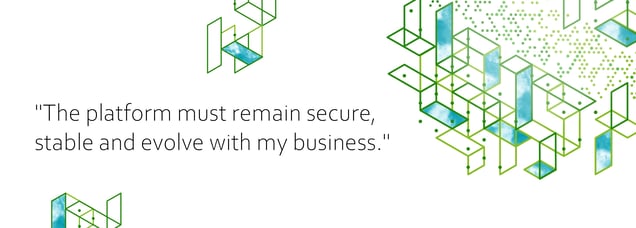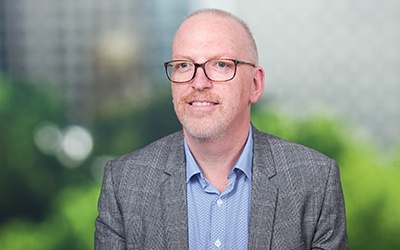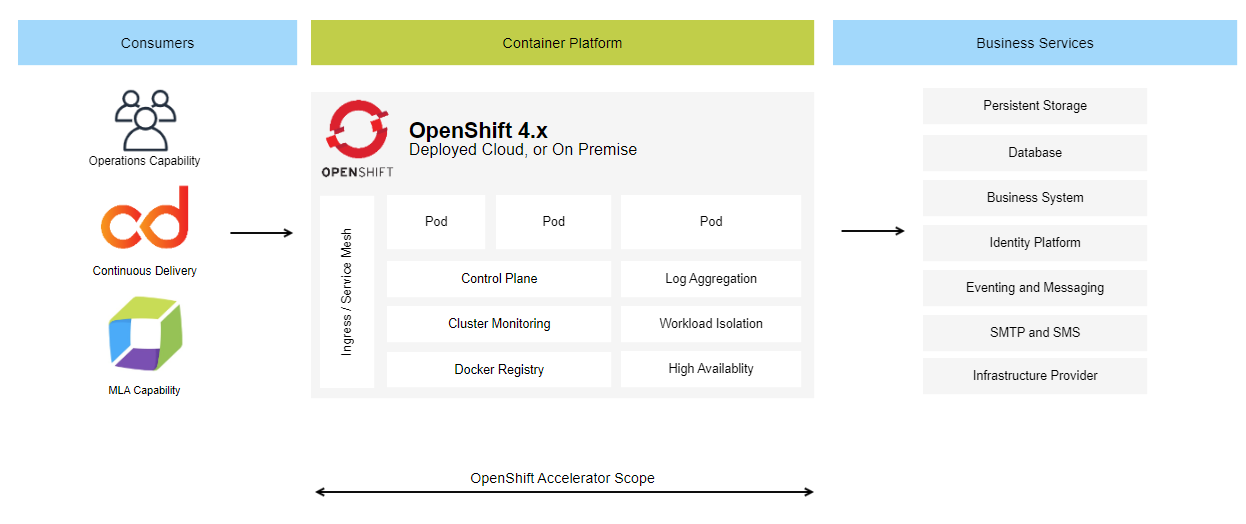
Platform Subscription
As cloud-native platform technologies mature and become mainstream, the type of organisations utilising these platforms changes. There is less emphasis on install and operate and more of a shift towards optimisation and realising business benefits. Early adopters are done “experimenting” with the underlying technologies and now look at how they can exploit their leadership, while fast followers and mainstream consumers want to leap-frog the “installation” phase and move straight to productivity.
In our last article (Red Hat OpenShift at Speed with Deloitte Accelerators), we described four different consumption models for platforms in the modern enterprise through our new Platform CoE with Red Hat. Now let’s zoom in on the “subscribe and go” consumption model - the fully hosted option which is showing a rapid growth in the Kubernetes adoption curve.
Platform capabilities are no longer a technical end-state but are becoming the baseline upon which to drive the strategic outcomes of developer productivity and organisational agility. “Subscribe and go” organisations can now concentrate on more fundamental challenges with much greater business benefits when they are met head-on.
 Building a DevOps Culture
Building a DevOps Culture
Agility is the ability to rapidly create, trial, measure and adjust new capabilities, taking advantage of short feedback cycles to aid rapid decision making. The traditional bottleneck in this “OO DA loop” is the speed and frequency at which you can deploy into production. Masters of this technique deploy many times per day. The ability to respond quickly is enabled via high degrees of automation in the build, integrate, test and deploy pipelines - using continuous integration and delivery frameworks.
The success of this model can be illustrated in the release of OpenShift as a cloud service in AWS, Azure, and IBM Cloud. These service-based offerings increase agility further down the stack into the composition of the platform. By using these services Deloitte has been delivering platforms rapidly and providing clients with additional value through Red Hat’s support.
 CI/CD is the first step in establishing a DevOps culture and full-featured platforms will integrate this capability into the platform. But having CI/CD is not the same as using it properly. Development methods often need to change with more emphasis on test automation, externalising environment characteristics to promote portability, and skilling up in the use of containers as the fundamental transport along the pipeline. Often, changes need to be made at all levels, from the way that developers use source control through to the way that deployments are scheduled into production.
CI/CD is the first step in establishing a DevOps culture and full-featured platforms will integrate this capability into the platform. But having CI/CD is not the same as using it properly. Development methods often need to change with more emphasis on test automation, externalising environment characteristics to promote portability, and skilling up in the use of containers as the fundamental transport along the pipeline. Often, changes need to be made at all levels, from the way that developers use source control through to the way that deployments are scheduled into production.
Shifting Left of Security
Containers bring both the opportunity and obligation to revisit traditional approaches to security governance. These approaches are often applied as a “gate” right at the end of the development cycle. Secure software pipelines facilitate baseline static and dynamic security feedback early in the development lifecycle, enabling developers to detect and remediate vulnerabilities before it is too late. Augmenting policy and control through the CI/CD process can instrument a shared responsibility for application security (deploy and run-time), leading to a mature DevSecOps approach and forming the baseline of a more secure software factory.
As early adopters have already set the tone for what a full-featured platform provides—including capability, approach and cultural shift—organizations no longer have to think about complex lower-level capabilities of a platform and are instead empowered to focus on consuming the PaaS and exploiting the realised business value. Hybrid, heterogeneous systems, CI/CD software factories and accelerated developer productivity are becoming the new norm and expectation, with secure software factories and increased productivity being integral drivers behind the containerization journey.
Early adoption of containers and Red Hat OpenShift has enabled the Deloitte and Red Hat collaboration to accelerate the time-to-value for joint enterprise customers and change the way organizations leverage platforms and the modern-day stack. With Deloitte's expertise across different industries in the delivery of platforms across public clouds and on-premise IT environments, the Platform Subscription model helps your team, projects and company focus on business value add instead of building and maintaining infrastructure. With a mature PaaS solution by Deloitte Platform Engineering and Red Hat, you can enable your development teams to create, deliver, and run applications that drive existing and new business opportunities.
 This article was co-written with Brian Hanvey
This article was co-written with Brian Hanvey
Brian is a Senior Principal Solutions Architect at Red Hat.
He is a Systems and Technology Professional with strong business acumen and entrepreneurial abilities, that are used to drive overall solution success for customers and product sales for Red Hat.




